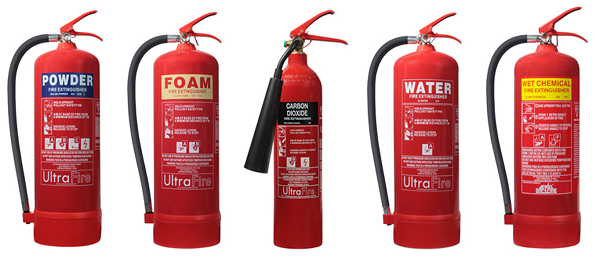GHS SDS Preparation Tip 3: How to Choose Suitable Fire Extinguishing Agents
Little Pro on 2018-01-11
GHS SDS section 5 shall describe the requirements for fighting a fire caused by a chemical substance or mixture, or arising in its vicinity. Quite often we see generic descriptions such as “using suitable extinguishing media” in the section 5 of low-quality SDSs. These descriptions are not helpful at all since it is highly likely that workers or SDS readers are not fire extinguishing experts and cannot make right choice in case of fire. It would be catastrophic if workers choose wrong fire extinguishing agents (i.e, those who can react with flammable materials). In this article, we will teach you how to specify suitable and unsuitable extinguishing media in GHS SDS section 5.
Types of Fire and Suitable Extinguishing Media
To choose suitable extinguishing media, you have to understand the categories of fire first and then choose the right type of fire extinguisher. You shall also specify unsuitable extinguishing media in your SDS.
|
Fire class |
Example |
Suitable extinguishing media |
Unsuitable extinguishing media |
|
Class A Common Combustible Solids |
Wood, Paper, Textiles, Coal, Plastics, etc. |
Dry powder, foam, water, water mist and wet chemicals |
Carbon dioxide For solid substances which in contact with water emit flammable or toxic gases, water should be specified as unsuitable extinguishing media |
|
Class B Flammable Liquids |
Petrol, Diesel, Oils, Paint, Paraffin and Common Organic Solvents etc. |
Dry powder, foam, carbon dioxide |
Wet chemicals, water |
|
Class C Flammable Gases |
Methane, Propane, Natural Gas etc. |
Dry powder |
Water, foam, wet chemicals, carbon dioxide |
|
Class D Flammable Metals |
Magnesium, Aluminium, Lithium etc. |
Dry powder (NaCl, graphite or NaCO3) |
Water, foam, wet chemicals, carbon dioxide |
|
Class E Electrical Fires |
Computers, Stereos, Fuse boxes, Batteries etc. |
Dry powder, carbon dioxide |
Water, foam and wet chemicals |
|
Class F Kitchen Fires |
Cooking Oil, Fats, Grease etc. |
Wet chemicals, foam |
Water, carbon dioxide |
Note: US NFPA has similar fire classification, but not exactly the same classification
Types of Fire Extinguisher and Take-home Message
There are 5 common types of fire extinguisher: dry power, foam, carbon dioxide, water and wet chemical (see picture below). Each type has its own advantages and disadvantages. Please always specify the right type of fire extinguisher for your chemicals in the SDSs to reduce property loss and save lives.

If you wish to quickly remember which type of fire extinguisher is suitable for your chemicals, please remember the following take-home messages:
- Water is only suitable for common flammable solids. It is not suitable for other fire types, especially flammable metals and electrical fires.
- Foam is suitable for common flammable solids and liquid
- Dry powder is suitable for the most types of fire. It is the only type of fire extinguisher suitable for flammable gases.
References
Related Readings
- GHS SDS Tips 1: How to Select Gloves for Chemicals
- GHS SDS Tip 2: How to Find Occupational Exposure Limits
Having Questions?
We do not provide consultancy services. If you have questions or need any help, please contact our sponsor. You may also find an expert in CSP business directory below. If you are a consultant, you may get yourself listed in CSP business directory (free) or sponsor this page to leave your contact info on this page..

Tags: Topics - GHS, GHS SDS and Labelling